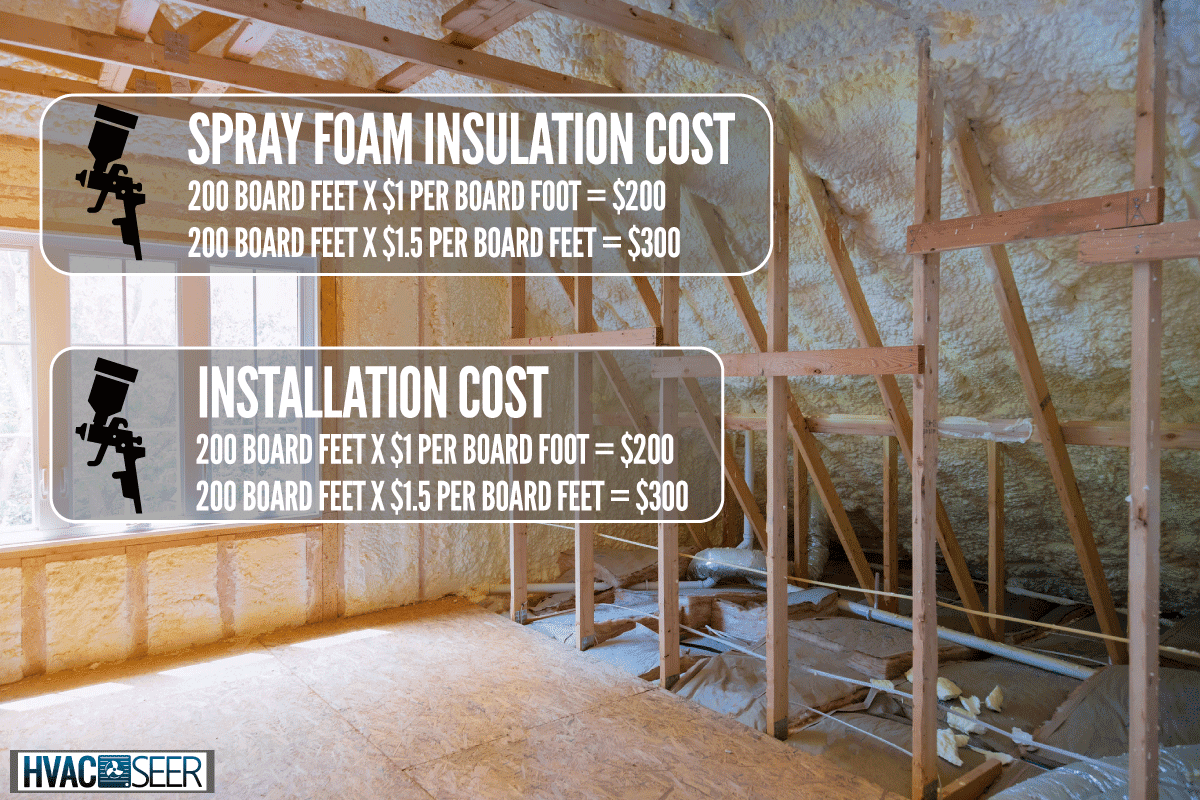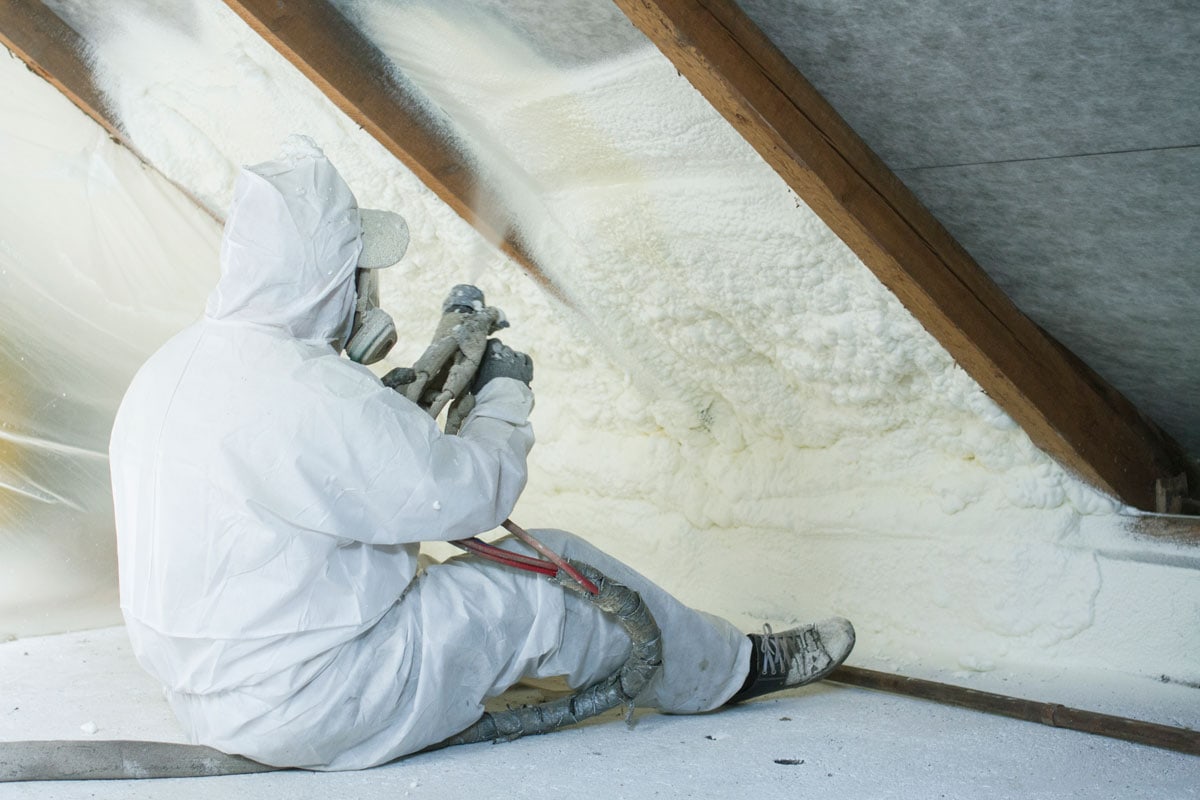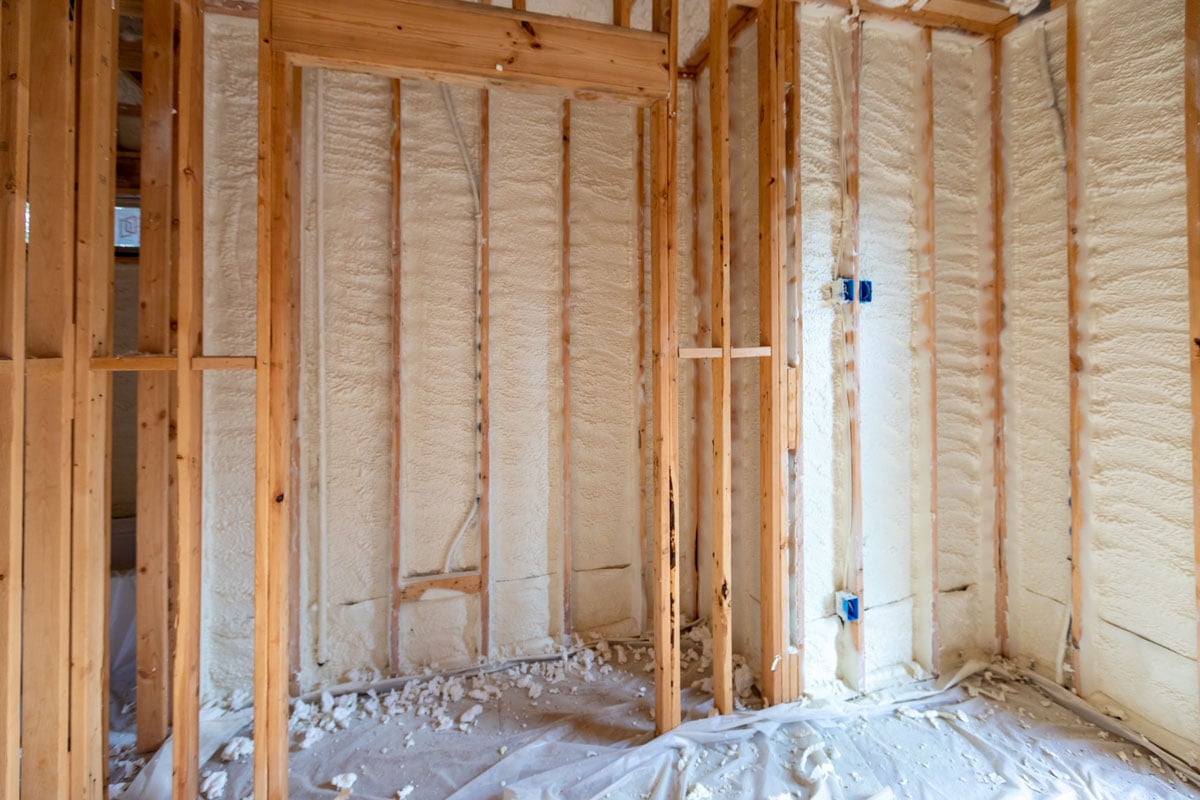Spray foam is a type of insulation and air barrier that is used to keep air out of walls, floors, and ceiling cavities. In some circumstances, you might want to get spray foam insulation for your area! More specifically, a closed-cell spray foam insulation. Now, you are wondering how much it would cost. If that's your concern, we've researched the answers for you!
The closed-cell spray foam costs $1 to $1.5 per board foot on its materials. Also, the cost of installation per square foot ranges from $1.5 to $4.9. However, several factors could increase the labor costs, including the spray foam thickness, the installation area, and extra services.
This article will explain exactly what closed-cell spray foam insulation is, its cost, advantages, drawbacks, and a lot more. So, sit back, relax, and let's learn about all these things.

Closed Cell Spray Foam Insulation
A closed-cell spray foam is also known as closed-cell spray polyurethane foam (SPF). It's one of the most energy-efficient insulation options available on the market ,with high R-values when aged. The term closed-cell refers to the finished insulation material's cell structure. Millions of microscopic plastic closed cells make up one cubic inch of polyurethane foam insulation.
Moreover, it also acts as an air barrier, allowing for low moisture vapor permeability and great water resistance. It also has a density of about two pounds per cubic foot. In building applications, medium density foam gives sheer and racking strength to wall assemblies.
In terms of insulation, the R-value is crucial because it determines how effective the insulation is. This figure is determined by how well the insulation performs in a specific situation. The better the insulation, the higher the R-value. The R-value of closed-cell spray foam is between 6.5 and 7 per inch of thickness.
Closed-cell foam works well to cover wall cavities, external walls, rim joists, attics, crawl spaces, crevices, and gaps at home because of its long-lasting nature. They are also commonly used in commercial buildings, vans, and pole barns.

How Much Does Closed Cell Spray Foam?
Polyurethane foam installation costs vary depending on several factors, including the thickness and type of foam used, the project's square footage, debris removal, and the home's age. Materials costs of closed-cell spray foam are $1 to $1.5 per board foot. Installation cost is $1.5 to $4.9 per square foot.
However, other factors could increase the labor costs, such as the thickness of the spray foam, installation area, and extra offerings like setup, trash removal, and cleanup.
Spray foam kits work well for DIY repairing and insulating around doors and windows and cost $300 to $600 to fill 200 square feet with 1" thickness. Closed-cell foam kits cost more than open-cell foam kits. Because it's difficult for unskilled installers to evenly distribute foam across surfaces, DIY kits are appropriate for smaller tasks.
How to Determine the Cost of Spray Foam Installation?

1. Calculate the board feet of spray foam insulation using the formula:
- Length (feet) x Width (feet) x Thickness of the Foam (inches) = Board Feet or
- Surface Area (square feet) x Thickness of the Foam (inches) = Board Feet
Let's say you want to use 1-inch thick foam insulation to insulate 200 square feet of your home's walls. So, you will have:
- 200 square feet x 1 inch = 200 board feet
What if you live in a cold climate and require more insulation? Simply adjust the thickness (in inches) in your equation as needed.
- 200 square feet x 2 inches = 400 board feet
- 200 square feet x 3 inches = 600 board feet
2. Multiplying the board feet by the material cost per board foot once you know how much insulation you need.
The spray foam insulation cost for 200 board feet based on our estimated average prices of $1 to $1.5 per board foot is between $200 to $300.
- 200 board feet x $1 per board foot = $200
- 200 board feet x $1.5 per board feet = $300
3. For installation charges, multiply the area of the surface to be insulated by the installation fee per square foot ($1.5 to $4.9).
The installation cost of 150 board feet will be around $240 to $980.
- 200 square feet x $1.5 per square foot = $240
- 200 square feet x $4.9 per square foot = $980
4. For the total cost, add the material cost and the installation cost.
For 150 square feet, you will be spending around $440 to $1,280.
- $200 (material cost) + $240 (installation cost) = $440
- $300 (material cost) + $980 (installation cost) = $1,280
DIY Vs. Pro
Though you can save a lot of money by doing it yourself, spray foam insulation has a lot of technical difficulties and health risks. On-site mixing of isocyanate and polyol chemicals is required for spray polyurethane foam insulation.
Spray pressure, mixing ratio, temperature, and humidity must all be balanced for proper application and performance. An experienced installer can fine-tune the necessary variables to make sure the spray foam sticks and works properly.
In terms of safety, the Environmental Protection Agency (EPA) warns that spray polyurethane foam exposure can cause both short and long-term health problems, making it even more compelling to hire a skilled installer with appropriate tools. Although hiring professionals adds to the cost, we recommend doing so for the purpose of high-quality spray foam insulation and your personal safety.
Pros & Cons of Closed Cell Spray Foam

Here are a few benefits and drawbacks to consider before installing closed cell spray foam insulation in your home.
Pros
Effective Insulator
Closed-cell spray foam outperforms all other options because of its expansive nature; it can efficiently seal all crannies and nooks. With an R-value of 7, it has the greatest R-value per inch on the market.
Energy Saver
It is incredibly energy efficient and provides a great air barrier because it effectively covers nooks and crannies. As a result, it saves up to 50% or more in energy costs on average.
Air Tight Seal
It is the only type of insulation that can completely seal holes and cracks in your crawl space or attic. One of the most prevalent causes of high energy bills is air leakage. Spray foam insulation creates an airtight seal that is 24 times less susceptible to air infiltration than conventional types of insulation.
Moisture Barrier
More than just air can enter through holes and cracks in walls and crawl spaces. If exposed cracks and holes are not sealed, water and moisture can enter these areas. Spray foam insulation is extremely resistant to water. It not only successfully seals and protects against airborne moisture and leaks, but it also does not absorb water in the event of floods, unlike other materials.
Mold Resistant
Spray foam is not just water-resistant, but it's also constructed of an inert polymer that gives mold and bacteria nothing to eat. Mold and mildew are better protected in homes insulated with closed-cell spray foam.
Long Lifespan
It is made of an inert polymer that makes it long lasting. Spray foam insulation can last for years before it needs to be replaced. It works at peak efficiency for long periods.
Environmentally Friendly
Spray foam aids in the reduction of energy consumption, resulting in a "greener" home. It is resistant to moisture and mold growth, and it is designed to last long, resulting in less material use.
Cons
High Cost
Spray foam insulation is more expensive than traditional insulation, costing up to $1.5 per board foot. Fiberglass batt insulation, for example, does not exceed $1 per square foot and can be as low as $0.12. Spray foam insulation might not be ideal if you're on a limited budget.
Health Risks
Spray foam insulation can cause skin, eye, and respiratory irritation. Therefore, installers should take extra precautions. Due to off-gassing during the curing process, several manufacturers recommend leaving the area for 24 hours after installation. Additional costs may arise as a result of temporary housing or missed business.
DIY-Unfriendly

Although spray polyurethane foam can be easily purchased at your local hardware store, you will need at least some experience or training to effectively mix and install it. You'll also need the appropriate chemicals and equipment. In general, SPF is not a DIY-friendly insulating material.
Final thoughts

Closed-cell spray foam insulates your home, lessens energy bills, creates an airtight seal, lasts for the life of the structure, and more. Like most things, it’s not an easy job, and it's quite expensive. Weighing the benefits and drawbacks of spray foam insulation will help you understand why such work is costly and better to be done by a professional.
Hopefully, this article has helped you answer your question and understand more about closed cell spray foam insulation. Before you go, would you like to know how long spray foam insulation smells? If you'd like to find out more, check out our post here.
Are you curious how heavy a spray foam insulation is? To find out more, check out our post here. Until next time!
